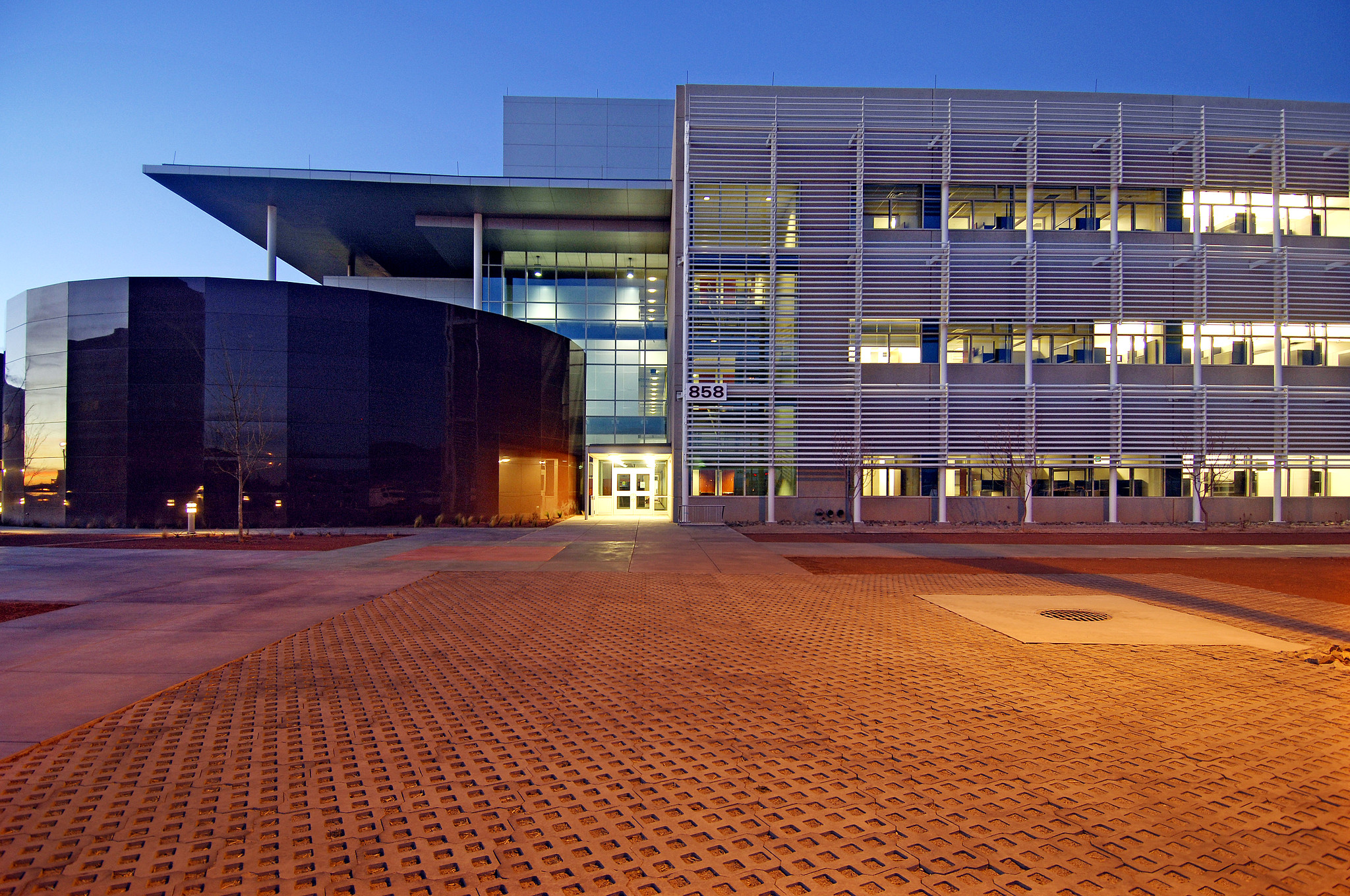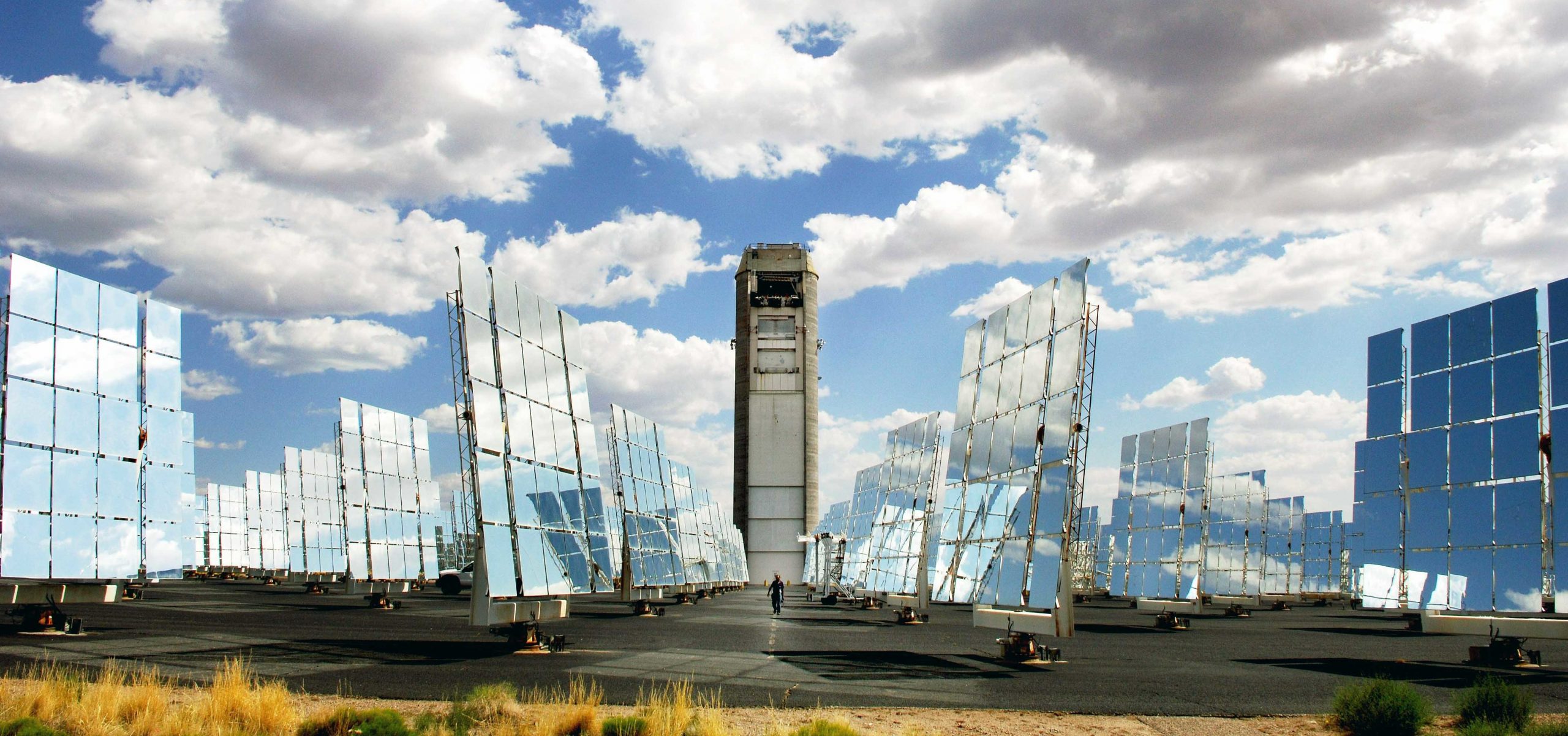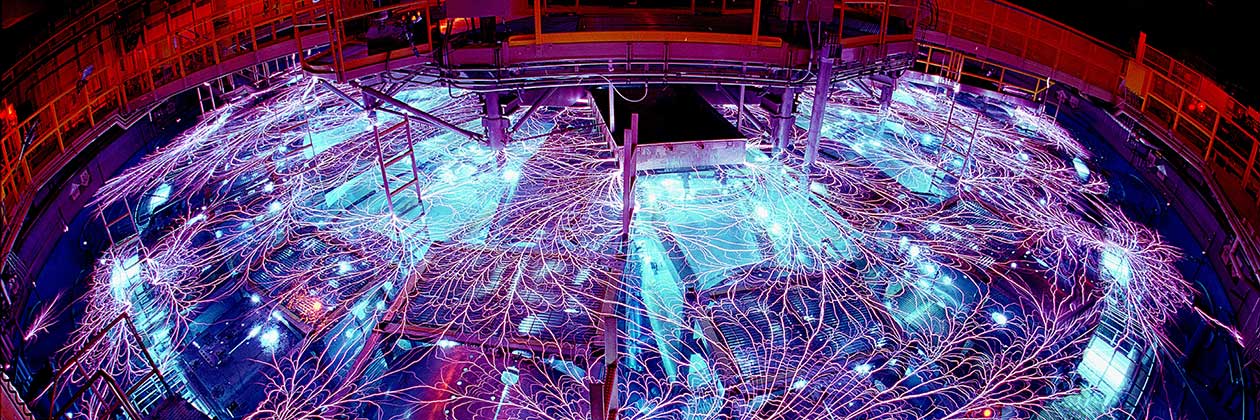
Microsystems Engineering, Science and Applications (MESA)

National Solar Thermal Test Facility (NSTTF)

Center for Integrated Nanotechnologies (CINT)

Z Pulsed Power Facility
Sandia National Laboratories, one of the largest Department of Energy (DOE) research facilities, utilizes specialized buildings and equipment to conduct world-class research and effectively meet unique program requirements. The facilities tagged as a Technology Deployment Center (TDC) can be used by outside researchers; see this Work With Sandia page for more information on collaboration opportunities.
AMPL provides extensive expertise in the areas of manufacturing research and development, as well as advanced engineering and prototyping capabilities.
AML focuses on ceramics, porous materials, catalysts, electronic materials, materials synthesis, and advanced manufacturing research.
The Advanced Power Electronic Conversion Systems (APEX) Laboratory supports the development of advanced power conversion topologies and intelligent control strategies. Research in the APEX laboratory focuses on robust and fault-tolerant conversion systems for utility-scale...
The Power Sources Technology Group (PSTG) group provides comprehensive capabilities in power source research, design, engineering, characterization, evaluation, and testing.
The ACF is a unique capability for simulating drop and high-velocity impact testing combining a breadth of instrumentation.
ACRR is used to test objects in a mixed photon and neutron irradiation environment. Researchers conduct a wide variety of experiments in nearly every branch of nuclear science.
The ABL located in Livermore, CA focuses on energy security, confronting the risks of global warming and biosecurity research focused on reducing threats from infectious diseases and biological weapons.
The AHCF is a nuclear facility used to characterize, treat, and repackage radioactive and mixed material and waste for reuse, recycling, or ultimate disposal.
The BATLab is an internationally recognized leader in energy storage system safety research.
The Blast Tube facility provides tests using different blast tube configurations with varying lengths and diameters to perform tests with energetic and hazardous materials.
Lurance Canyon Burn Site (LCBS) provides controlled fire environments to perform fundamental studies, simulate transportation and handling accidents for nuclear safety studies, and evaluate and certify hazardous materials shipping containers.
The CCR work includes computer system architecture (both hardware and software); enabling technology for modeling physical and engineering systems; and research in discrete mathematics, data analytics, cognitive modeling, and decision support materials.
CINT is a DOE/Office of Science NSRC user facility devoted to scientific principles that govern nanoscale materials.
The Superfuge capability provides the most realistic flight environments beyond the typical launch, reentry, and flight inertial loads by combining vibration, spin, thermal, and shock.
The CRF responds to the nation’s evolving energy challenges with ever increasing expertise and capacity aimed at improving our nation’s ability to use and control combustion processes.
CSRI brings university faculty and students to Sandia for focused collaborative research on Department of Energy computer and computational science problems.
Researchers at the CONET Laboratory conduct research, development, and testing on networked and distributed systems.
The Design, Evaluation and Test Technology Facility focuses on simulating a wide range of environments for component and system testing.
DETL is a multipurpose research facility designed to integrate emerging energy technologies into new and existing electricity infrastructure to accommodate the nation’s increasing demands for clean, secure, and reliable energy.
ESTP, in conjunction with the Energy Storage Analysis Laboratory (ESAL), provides long-term testing and validation for electrical energy storage systems. The goal of the ESTP is to develop advanced energy storage technologies that will...
The ESEF focuses on advanced diagnostics and fundamental experiments. Researchers seek to improve understanding of phenomena in areas of fluid flow, heat transfer, and aerodynamics.
The ECF provides unique capabilities allowing staff to design, test, and prototype a wide variety of energetic components in support of Sandia's ND mission.
ETG provides diverse technical expertise and an agile, integrated approach to solve complex challenges for all classes of energetic materials (EM) and explosive components.
The FACT site provides the equipment and seismically quiet surroundings required for testing infrasound and seismic sensors, instrumentation, and monitoring systems.
The GIF provides high-fidelity simulation of nuclear radiation environments for materials and component testing.
The Geomechanics Laboratory enables researchers to measure rock properties under a wide range of simulated environmental conditions, including high-pressure and complex load paths
The HOT site researchers simulate conditions found deep underground to study the effects of heat on the drill rig hammer, and drill into various types of rock.
IMRL integrates research from atomic scale to full scale components, investigates organic materials, advanced alloys, electronic and photonic semiconductors, high temperature superconductors, ceramics, quantum systems, and laser, optical and dielectric materials.
The IBL enables scientists to study and modify materials systems using ion and electron accelerators.
JBEI is a DOE Bioenergy Research Center dedicated to developing advanced biofuels—liquid fuels derived from the solar energy stored in plant biomass that can replace gasoline, diesel, and jet fuels.
JTA program allows critical assessment of weapon systems, Department of Defense (DOD) platforms, and support personnel performance.
LAZAP tests and calibrates U.S. reconnaissance and Global Positioning System (GPS) satellites. The facility propagates visible high-powered lasers of multiple wavelengths through the atmosphere with a large aperture beam director.
MSE provides knowledge of materials structure, properties, and performance and the processes to produce, transform, and analyze materials.
The Mechanical Shock Complex provides tailored impact environments, such as shock and crush. The complex simulates dynamic environments such as weapon delivery, severe accident, and pyroshock.
The Mechanical Test and Evaluation Facility conducts experimental research and develops diagnostics to study the mechanical behavioral of materials.
MANTL comprises four buildings with office and lab space and Sandia’s Plating Research Laboratory. MANTL research focuses on mechanical and electrical engineering, chemistry, radiography plating, and more.
MESA integrates scientific disciplines to produce functional, robust, integrated microsystems. Today researchers pursue advanced concepts that integrate not only electronics at the micro scale, but embody sensors, photonics, and MEMS components.
The MGTC is a set of mobile projectile launch systems (guns) used to test a variety of projectiles and/or targets. The MGTC enables investigation of terminal ballistic events into in-situ geologies or engineered targets.
Operated by Sandia for the U.S. Department of Energy (DOE), the National Solar Thermal Test Facility (NSTTF) is the only large-scale concentrating solar power (CSP) and solar thermal test facility in the United States.
NESL focuses on creating a thermal-to-electric power conversion technology in a configuration called the recompression closed Brayton cycle that uses supercritical carbon dioxide as the working fluid.
NEWC focuses on performing high-quality and real-world testing of nuclear power components, including prototypic spent fuel assemblies and storage systems.
NUFAC provides designing, operating, and experimentation with nuclear reactors.
Sandia’s Photovoltaic Systems Evaluation Laboratory (PSEL) enables performance characterization of photovoltaic (PV) cells, modules, and systems. PSEL research is conducted on behalf of the Department of Energy (DOE) and other government sponsors, in direct...
The PRF offers collaborators access to cutting edge diagnostic and computational capabilities and the expertise that is needed to set up and execute experiments and analyze data generated during the collaborative endeavor.
The PSL provides technical guidance, support, and consultation and anticipates future measurement needs of the nuclear weapons complex and other DOE programs.
PETL R&D ranges from understanding mechanisms at the atomic level to developing nuclear weapons components and evaluating the lifetime and reliability of the nuclear stockpile.
QSCOUT is a quantum computing testbed based on trapped ions that is available to the research community as an open platform for a range of quantum computing applications.
The sled track provides a controlled environment for high-velocity impact, aerodynamic, acceleration, and other related testing for both small and large test items.
The Sandia Wave Energy Power Take-off (SWEPT) Laboratory offers mobile, specialized testing for systems that produce power from wave energy. SWEPT is used to test wave energy converter (WEC) power take-off (PTO) systems.
At the Scaled Wind Farm Technology Facility (SWiFT) in Lubbock, Texas, Sandians partner with other researchers to study the interaction of multiple wind turbines in a wind farm.
The STAR facility provides a full range of pressure (bars to multi-Mbar) for material property study utilizing gas/propellant launchers, ramp-loading pulsers, and ballistic applications.
TSL capabilities include traditional thermal spray processes, cold spray, and controlled atmosphere plasma spray, process diagnostics, process modeling, and advanced process control.
The TTC is used to study quiescent, large-scale combustion events, as well as to assess the effect of wind driven fires. Fires include hydrocarbon liquid, combustible solids, and propellant fires.
Sandia and the University of Alaska Fairbanks have teamed up to advance the concept of a permanent, comprehensive multi-agency USHARC in the Prudhoe Bay area.
The Utqiagvik facility supports instrumentation built specifically for the Arctic to obtain continuous measurements of clouds, aerosols, precipitation, energy, and other meteorological variables.
WIPP is a deep geologic repository for permanent disposal of a specific type of waste that is the byproduct of the Nation's Nuclear Defense Program.
The Water Impact Facility provides a controlled environment for high-velocity water impact testing, gravity-assisted drop testing, and underwater testing.
Z is the world’s largest and highest-current pulsed power machine and one of three flagship facilities in the U.S. Inertial Confinement Fusion Program.